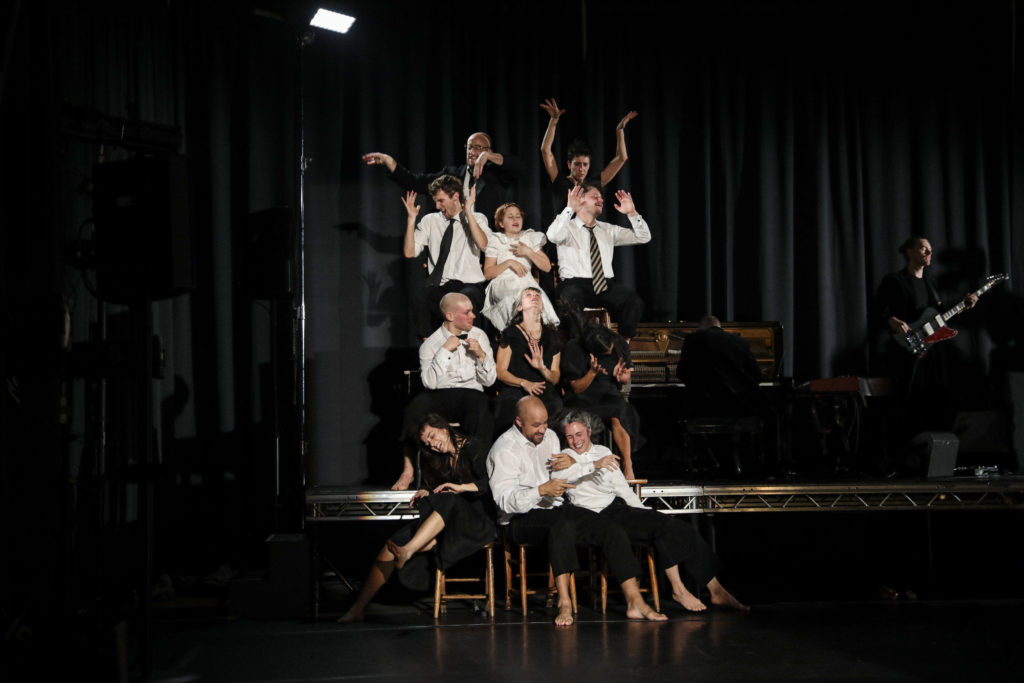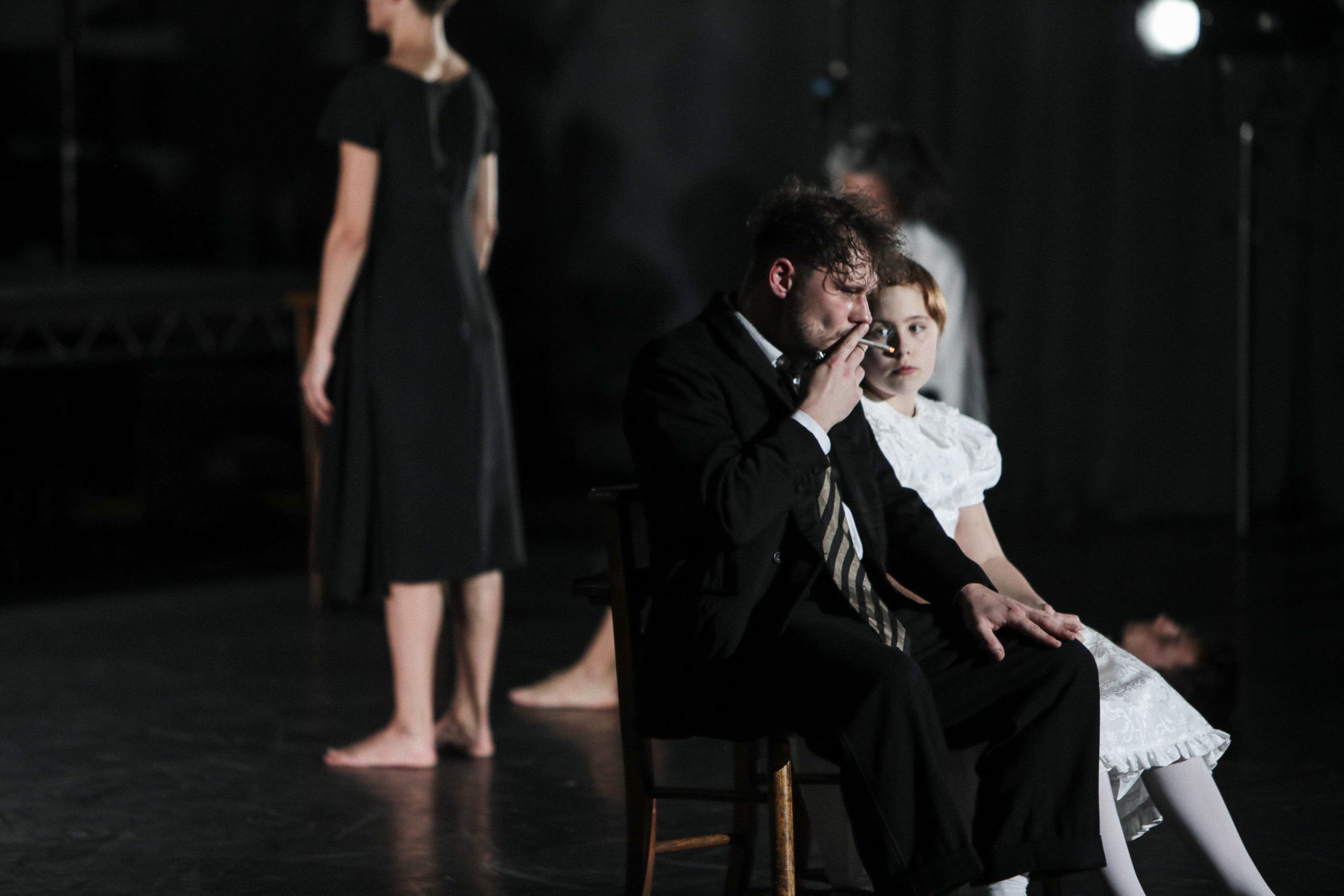Words by Bengi-Sue Sirin.
When Irish dance company Teac Damsa’s piece Mám premiered in 2019 it was received with great acclaim, even garnering an Olivier Award nomination. The time has come for its revival, and it is currently finishing a London run before reshowing in its native Ireland. I was lucky enough to see it last Friday at Sadler’s Wells amongst a buzzy bustling crowd of all ages. Judging by the reception it got, I think it was widely interpreted as a huge success!
No stranger to the power of interpretation, artistic director and choreographer Michael Keegan-Dolan was initially drawn to dance as a way of telling stories. As he told Sanjoy Roy in his programme interview, he named his previous dance company ‘Fabulous Beast Dance Theatre’ with the canvas of fables, myths, creating moments of connection with the unseen… He is an enormous fan of William Blake, a masterful teller of stories. So though an unconventional starting place, it is perhaps not a surprising one that Mám was born of a word with a multitude of meanings.
Mám in Gaelic has three meanings. It can either be a yoke, a mountain pass, or a handful (a handful of sweets is the rather adorable given example). Likewise, Mám is open to various interpretations. From the moment it begins, with a paganesque ram-headed accordion player and a young girl in a white dress laying on a table, it places itself in the realm of the fabulous. There are several other instances which remind me of Lewis Carroll mixed with The Wicker Man, which make me jump and almost gasp. But the thing I like most about Mám is its simultaneous anchoring in recognisable mundanities, such as the various stages of a social gathering and even the opening of a packet of crisps. In this marriage of the ordinary and the extraordinary, Mám really sings.
Once the accordion player unmasked himself to reveal celebrated Irish musician Cormac Begley, and the white-dressed girl (danced by Keegan-Dolan and company dancer Rachel Poirier’s real-life daughter Ellie Poirier Ni Dhobhailen) settled into a packet of crisps, they were joined by twelve Teac Damsa dancers all clothed in black with Darth Vader-ish masks. They partook in a slightly unnerving call-and-response body percussion sequence that more than one other reviewer has described as ‘cultlike.’ The masks come off, chairs are moved. It is hard to pin down the occasion, the mood. A wedding? A wake? Perhaps the ambiguity of a traditional Irish wake is at play here. Who can say…

It isn’t long after that when we start to see Keegan-Dolan’s movement vocabulary establish itself. There is a lot of frenzy, a lot of sweepy swirling. I imagine them as paintbrushes drawing thick, unctuous circles on the stage. At one point, the dancers sweep across the stage in a vertical line packed with molten movements that evoke the Picasso painting ‘Two Women Running on the Beach.’ It is not all serious though; Mám has its fair share of comedy. A really brilliant section involved the terrific David Southward plunge-running into whoever happened to be there for a hug or even a kiss. He discriminates only once and (sorry to say it but) we all laugh at this unexpected rejection. It is anxious attachment style in dance form, the needy serial-hugger that comes out in full drunken force at almost every social gathering. These elements we recognise crop up like widespread secrets we don’t expect to air, and make Mám rather Bauschian and special.
Narratively, Mám certainly feels like a social gathering. It takes place in what resembles a town hall, filled with chairs and restless people. There are swells and dips of energy, changes of seating arrangements, solos that allude to lashings-out of stir crazy frustration… The closest thing to changes of scene are an immediate 45 degree tilt of the backdrop rail that pours the vast blue fabric down like crashing water. It is tremendous and shocking, but then Mám moves on unhindered. Some dancers take their jackets off so it looks slightly less funereal, but other than that, the staticness of the piece is what gives it its lifeblood. We have all been stuck in a room at a seemingly unending social gathering before, witnessed the variety of bizarre human interactions and outbursts that arise in these situations. Theatre regularly draws from this for inspiration, but from my experience, it is rare to find such a candid take on it in dance.
I must add – we are treated to some brilliant musical performances too. The Berlin-based collective s t a r g a z e accompany Cormac Begley across a soundscape that is at points mightily traditional, at other times riotous and jazzy. All in all, Mám is a testament to the magic that can come from the unexpected directions that things can take, be that a wake or a wedding or a stage full of open-minded people with instruments. More a handful of sweets than a yoke, in my opinion!
